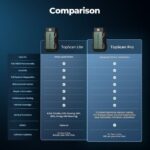Are you developing an OBD2 scanner or application and tired of running back and forth to your car for testing? Many automotive enthusiasts and developers face the challenge of needing to test their OBD2 devices without constantly being tethered to a vehicle. The process of uploading code to your Arduino-based OBD2 scanner, then physically connecting it to your car, only to find a minor adjustment is needed, can be incredibly time-consuming and inconvenient. Imagine the frustration of repeated trips to the garage just for testing!
The solution? An Obd2 Simulator. These devices mimic the signals of a car’s OBD2 port, allowing you to test your scanners and software in the comfort of your home or workshop. While commercial OBD2 simulators exist, they often come with a hefty price tag, sometimes exceeding what many DIYers are willing to spend. This is where the beauty of open-source and DIY solutions shines.
Fortunately, building your own obd2 simulator with Arduino is not only possible but also a rewarding project that deepens your understanding of OBD2 communication and vehicle diagnostics. Instead of investing in expensive proprietary hardware, you can leverage the power of Arduino and readily available components to create a functional and customizable simulator. This approach not only saves money but also empowers you with complete control and the ability to tailor the simulator to your specific testing needs.
This guide will outline the essential components you’ll need to embark on your DIY obd2 simulator project, paving the way for a more efficient and enjoyable development experience. Say goodbye to endless trips to the garage and hello to streamlined OBD2 testing right at your workbench!
Essential Components for Your DIY OBD2 Simulator
To construct your Arduino-based obd2 simulator, you’ll need a few key hardware components. These are easily accessible and relatively inexpensive, making this a budget-friendly project for any automotive electronics enthusiast.
-
Arduino UNO: The brain of your simulator. The Arduino UNO is a popular and versatile microcontroller board, perfect for this project due to its ease of use and ample processing power for OBD2 signal simulation.
-
CAN-BUS Shield: OBD2 communication in modern vehicles often relies on the CAN (Controller Area Network) bus protocol. A CAN-BUS shield provides your Arduino with the necessary interface to communicate over CAN, enabling it to simulate OBD2 data.
-
ELM327 Adapter (USB, Bluetooth, or WiFi): While you are building a simulator, you still need a way to interface with it using standard OBD2 diagnostic software. An ELM327 adapter, which you might already own for car diagnostics, acts as the bridge between your computer and the obd2 simulator. The connection type (USB, Bluetooth, or WiFi) is not critical as long as it creates a virtual COM port for your computer to communicate with.
-
OBD2 Diagnostic Software: To verify that your obd2 simulator is working correctly, you’ll need OBD2 diagnostic software. Many ELM327 adapters come bundled with basic software, and numerous free or paid options are available online. Any software compatible with ELM327 adapters and capable of reading OBD2 PIDs (Parameter IDs) will suffice for testing purposes.
With these components in hand, you’ll be well-equipped to start building your own obd2 simulator and streamline your OBD2 development and testing process. You’ll be able to simulate various vehicle parameters and responses, allowing you to thoroughly test your OBD2 scanner or application without needing a physical car.
